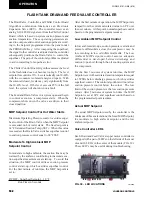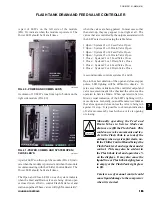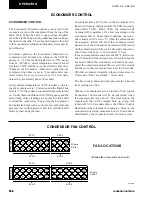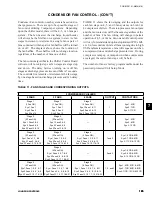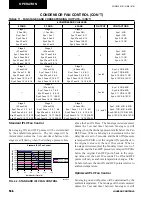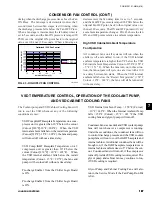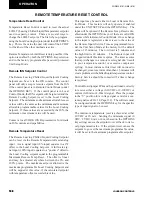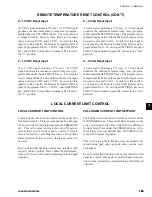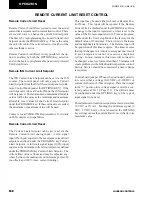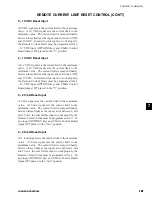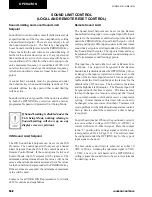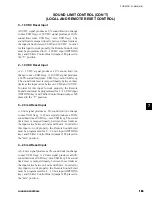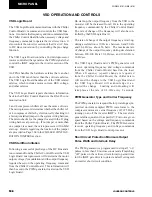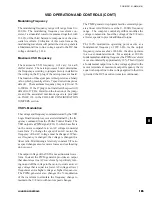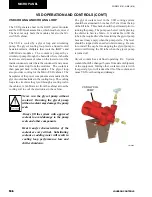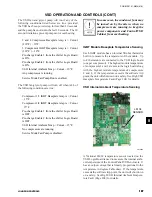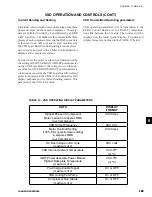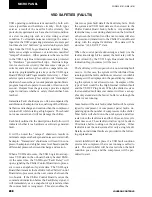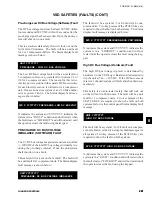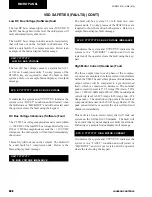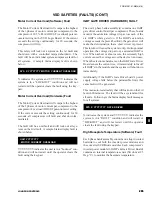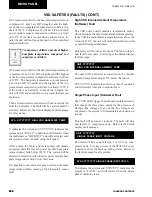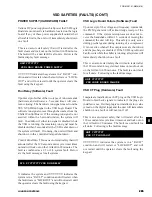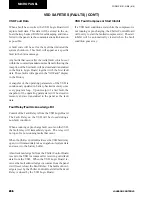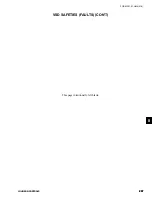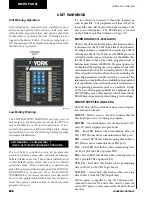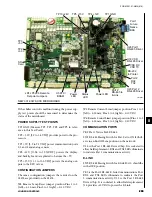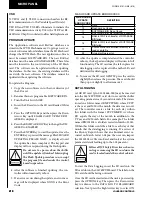
195
JOHNSON CONTROLS
FORM 201.21-NM4 (616)
195
JOHNSON CONTROLS
8
VSD OPERATION AND CONTROLS (CON'T)
Modulating Frequency
The modulating frequency range will range from 0 to
200 Hz. The modulating frequency waveform con-
sists of a sinusoidal waveform summed together with
16.66% of the third harmonic component of the sinu-
soidal waveform. Utilization of this waveform as the
modulating waveform will permit the drive to generate
a fundamental line to line voltage equal to the DC bus
voltage divided by 1.414.
Maximum VSD Frequency
The maximum VSD frequency will vary for each
chiller model. The microprocessor board determines
the frequency according to jumpers factory installed in
the wiring on the J7 plug of the microprocessor board.
The location of these jumpers is interpreted as a binary
value, which presently allows 7 speed selections plus a
default. The maximum frequency may vary from 178
to 200 Hz. If the J7 plug is not installed, the speed will
default to 178 Hz. Details on the location of the jump-
ers and the associated maximum speed are provided
on PAGE 165 in the CHILLER CONFIGURATION
JUMPERS section.
VSD % Modulation
The voltage and frequency commands issued by the VSD
Logic Board microprocessor are determined by the fre-
quency command from the Chiller Control Board. The
VSD output is a PWM signal (FIG. 2), which has effects
on the motor comparable to an AC voltage sinusoidal
waveform. To change the speed of an AC motor, the
frequency of the AC voltage must be changed. When-
ever frequency is changed, the voltage is changed in a
linear ratio. Maintaining a relatively constant V/F ratio
as speed changes assures motor losses and overheating
do not occur.
The output voltage of the VSD is not a sinusoidal wave-
form. Instead, the PWM generator provides an output
that simulates a true AC waveform by repetitively turn-
ing on and off the voltage to the motor to create an aver-
age voltage that is equal to a lower AC voltage at lower
frequencies and a higher voltage at higher frequencies.
The PWM generator also changes the % modulation
of the waveform to simulate the frequency change to
maintain the V/F ratio with motor speed changes.
The PMW generator is programmed to essentially oper-
ate a linear volts/Hz ratio over the 0 – 200 Hz frequency
range. The complex control algorithm modifies the
voltage command to boost the voltage of the V/F ratio
at lower speeds to provide additional torque.
The 100% modulation operating point occurs at a
fundamental frequency of 189.6 Hz. As the output
frequency increases above 189.6 Hz, the drive operates
in an over-modulated mode. For example, at 200 Hz
fundamental modulating frequency the PWM waveform
is over-modulated by approximately 18%. This will yield
a fundamental output line to line voltage applied to the
motor terminals at maximum output frequency that is
equal to the input line to line voltage applied to the drive
(provided the DC bus current remains continuous).


